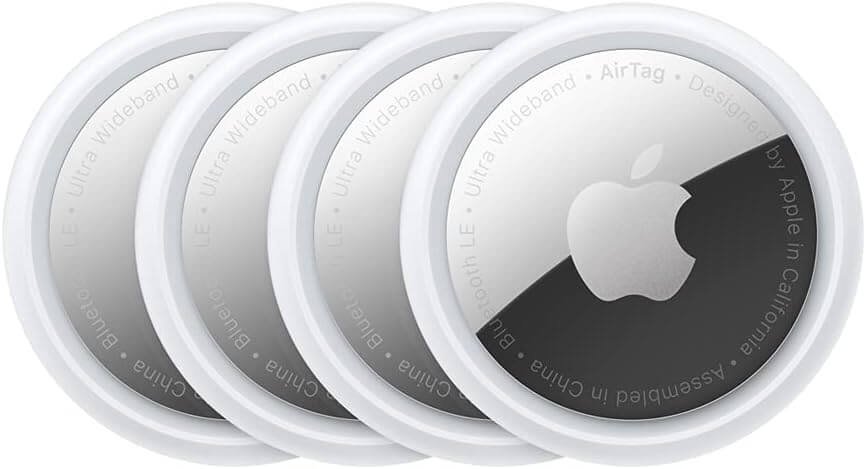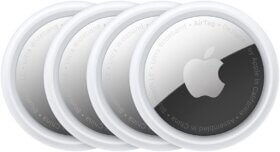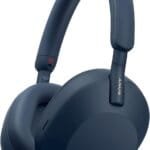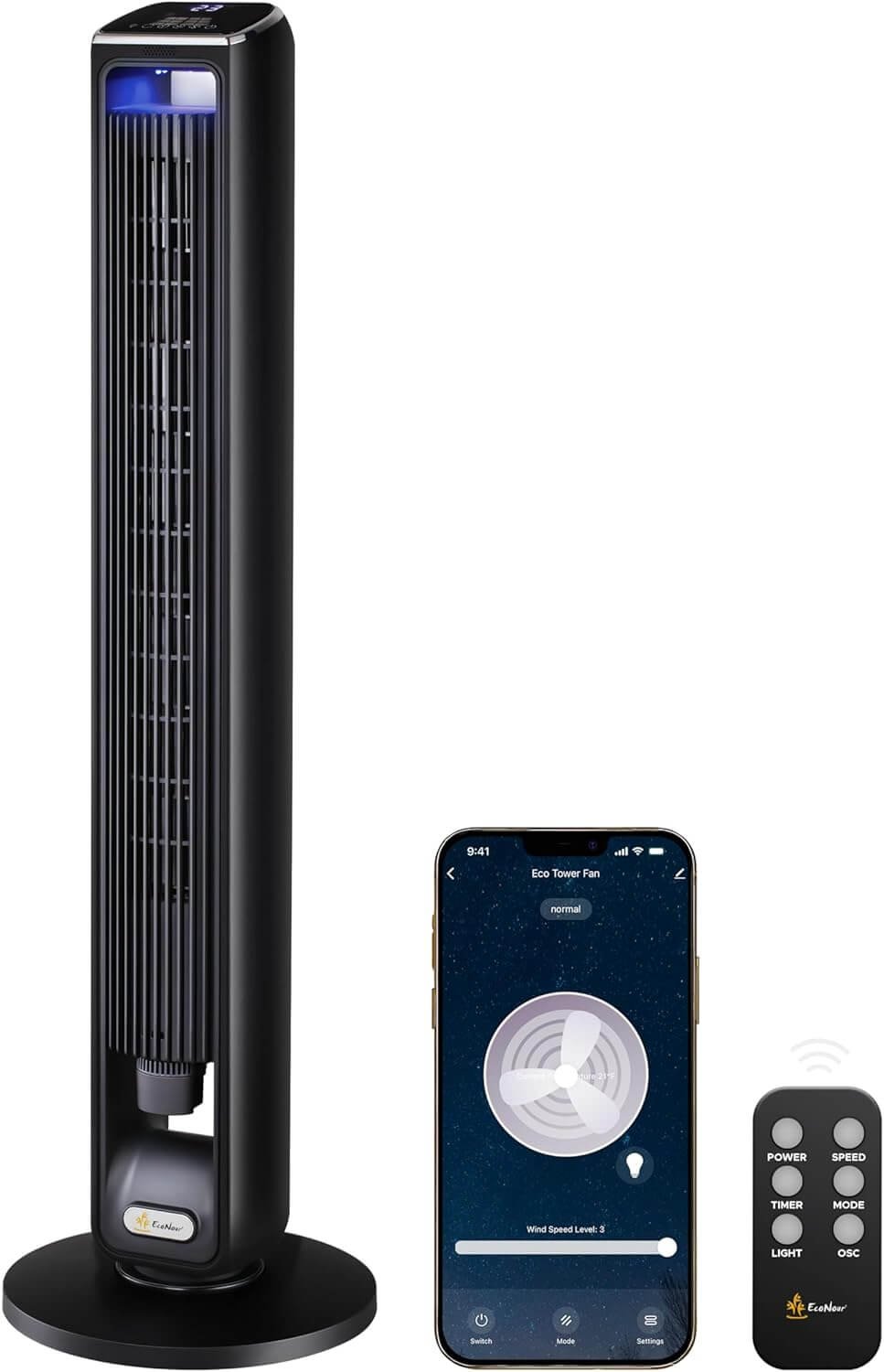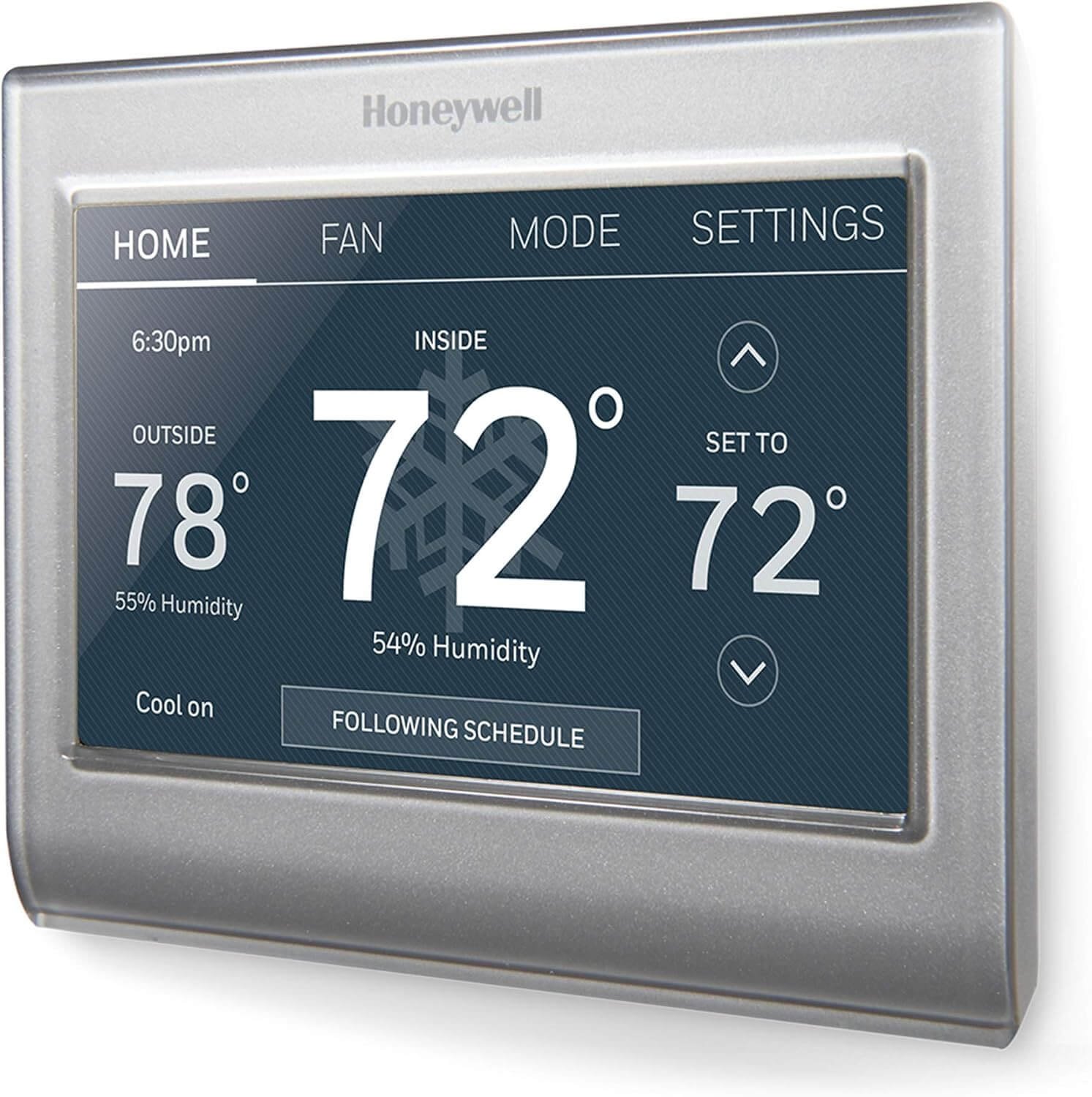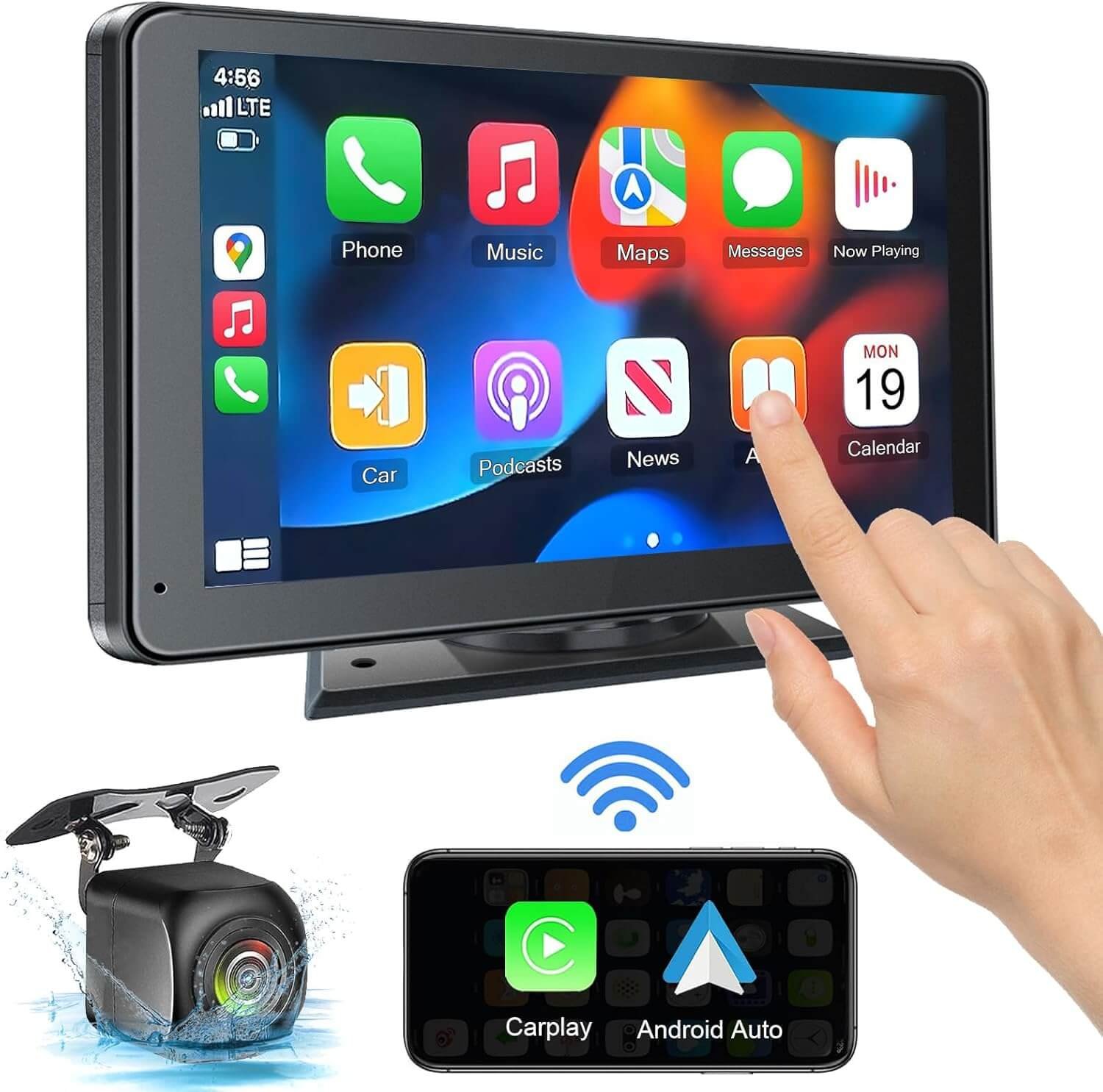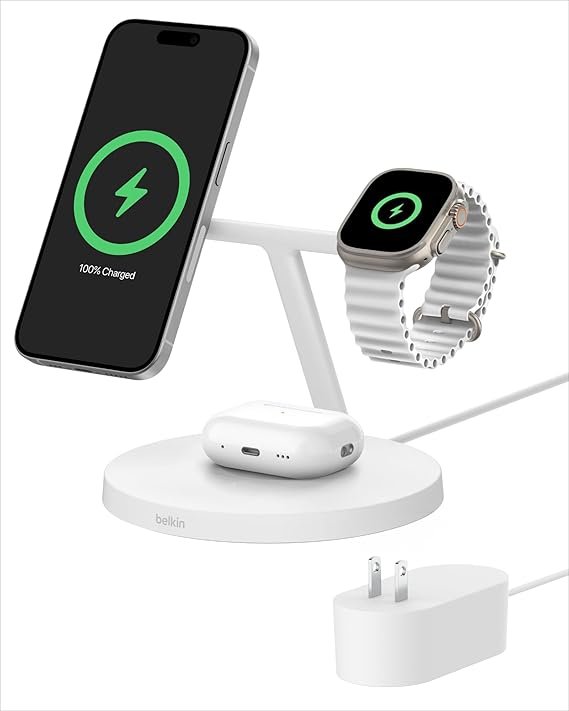Introduction to Apple AirTag
The Apple AirTag is a compact, Bluetooth-enabled tracking device engineered to assist users in locating misplaced items seamlessly. Designed with a minimalist aesthetic, the AirTag features a circular, stainless steel enclosure that complements the modern Apple ecosystem. Its simple yet appealing design allows it to blend effortlessly with a variety of belongings, such as keys, wallets, or bags. Users can easily attach the AirTag to these items using a range of accessories, ensuring that their essential possessions are always within reach.
At the core of the AirTag’s functionality is its integration with Apple’s Find My app, a robust tool that allows users to track the location of their devices and other Apple products. When an item equipped with an AirTag goes missing, users can leverage the Find My app to initiate the process of locating it. The app provides a visual representation of the item’s last known location on a map, significantly aiding in the recovery process. Furthermore, the integration with other Apple devices enhances the overall functionality of the AirTag, enabling a network of users to assist in finding lost items.
The intended purpose of the Apple AirTag extends beyond mere tracking; it embodies a commitment to creating a more organized lifestyle. It allows users to attach, locate, and retrieve lost belongings without hassle, thereby reducing the stress associated with misplacing items. The AirTag also includes a range of features designed to enhance its usability, such as Precision Finding, which leverages AR technology and user location data for accurate tracking within close proximity. Overall, the AirTag represents a significant advancement in personal item tracking, reflecting Apple’s dedication to technological innovation and user convenience.
How Apple AirTag Works
The Apple AirTag employs a sophisticated combination of technologies to facilitate item tracking and recovery. At its core, the device utilizes Bluetooth connectivity to communicate with nearby devices, allowing it to interact seamlessly within the Apple ecosystem. This Bluetooth Low Energy (BLE) feature ensures that AirTags maintain a low power consumption while still providing reliable tracking capabilities over moderate distances.
In addition to Bluetooth, AirTags leverage Ultra Wideband (UWB) technology, available on newer iPhone models, to enhance location precision. UWB allows for spatial awareness, enabling users to pinpoint the location of their items with remarkable accuracy when within close range. This feature significantly improves the user experience by providing directional cues, guiding users to their lost items more effectively compared to traditional Bluetooth-based systems.
The Apple AirTag is designed for versatility, allowing users to attach it easily to various objects such as keys, bags, or other personal belongings. The integration process is straightforward: users simply connect the AirTag to their Apple ID through the Find My app, and the tracker becomes immediately accessible across their devices. The Find My network plays a crucial role in the functionality of AirTags. This network harnesses millions of Apple devices to create a collective framework for locating lost items. When an AirTag moves out of the range of its owner’s device, it can be detected by any nearby Apple device. This detection process is anonymous and secure, ensuring user privacy.
Locating lost belongings using an AirTag involves both sound and visual cues. Users can initiate a sound from the AirTag via the Find My app, making it easier to locate the item. Furthermore, when within the range of an iPhone equipped with UWB, users receive on-screen prompts that provide precise directional guidance, enhancing the overall tracking experience.
Competitors in the Tracking Device Market
The tracking device market has expanded significantly, with numerous options available to consumers seeking to keep track of their belongings. Among the most notable competitors to Apple’s AirTag are Tile, Samsung SmartTag, and Chipolo. Each of these devices offers unique features, pricing structures, and performance capabilities that cater to different user needs.
Tile is one of AirTag’s most established competitors, recognized for its comprehensive range of products including the Tile Mate, Tile Pro, and Tile Slim. Unlike AirTag, Tile uses a community-based approach to locate items, leveraging a network of users who utilize the Tile app to help find lost items. Tile devices typically range from $25 to $35, depending on model and features. However, Tile’s reliance on a subscription service for additional features like location history may deter some users.
Another strong contender is the Samsung SmartTag, which primarily targets users within the Samsung ecosystem. SmartTag offers distinctive features such as SmartThings integration, allowing users to control smart home devices directly through the SmartTag. Priced similarly around $30, the SmartTag also allows for a longer Bluetooth range, although it lacks a community find feature like Tile’s, possibly limiting its effectiveness in locating lost items outside the immediate vicinity.
Lastly, Chipolo has made a name for itself with its user-friendly design and competitive pricing. Offering devices priced generally under $30, Chipolo boasts a loud ringtone and a unique feature that notifies users if they leave their belongings behind. However, like SmartTag, Chipolo can fall short in finding lost items over longer distances or in crowded environments.
In comparing these products to Apple AirTag, it becomes clear that AirTag offers seamless integration with Apple devices, enhanced precision tracking using U1 chip technology, and a robust Find My network. Each competitor has its strengths and weaknesses, but AirTag’s unique features, particularly for Apple users, provide compelling advantages for those invested in the Apple ecosystem.
Is AirTag Just Another Revenue Stream for Apple?
The launch of Apple AirTag has raised questions regarding its place within Apple’s expansive product ecosystem. Some industry analysts perceive this smart tracker as merely an additional revenue stream for the tech giant, which has consistently leveraged its ecosystem to generate substantial profits. Priced at $29 for a single unit and $99 for a pack of four, AirTag is relatively affordable compared to some of Apple’s flagship products. However, the pricing strategy adopted reflects the company’s ongoing emphasis on ecosystem engagement.
AirTag is designed to work seamlessly with Apple devices, employing the extensive reach of the Find My network. This functionality not only enhances the user experience but entices existing users to invest further in Apple’s product suite. Integrating AirTag with devices such as iPhones, iPads, and Apple Watches creates a compelling reason for users to commit to Apple’s ecosystem, thereby encouraging additional purchases of accessories or devices. It positions AirTag not just as a tracking tool, but as a gateway to a broader range of Apple services, thus facilitating upselling opportunities.
Moreover, Apple’s investment in the AirTag infrastructure goes beyond the device itself. The technology supports continuous improvement, which can lead to the introduction of new features or services that may require ongoing subscription fees. This model exemplifies how AirTag is strategically aligned with Apple’s broader business objectives. By establishing a recurring revenue flow through accessories, apps, and potential subscription services, AirTag can be seen not only as a standalone product but as a linchpin that locks users into a lucrative system of interconnected services.
Through its pricing strategy and integration within the Apple ecosystem, AirTag certainly functions as a potential vehicle for revenue generation. As Apple continues to innovate and expand its offerings, AirTag could very well serve as the founding piece for deeper user engagement and increased financial returns through synergistic relationships with other Apple products and services.
User Experience: The Good and the Bad
The Apple AirTag has garnered a diverse range of feedback from users since its release, offering insights into both its strengths and weaknesses. A significant number of customers have praised the AirTag for its user-friendly design and seamless integration within the Apple ecosystem. Users consistently highlight the simplicity of the setup process, which requires minimal effort to configure the device with their iPhone. The effective use of Bluetooth technology allows for precise tracking, and many users have reported that the “Find My” app provides reliable updates regarding the location of their belongings.
Furthermore, the widespread compatibility with various Apple devices enhances the overall user experience, ensuring that individuals can easily monitor their items from different iPhones, iPads, or Macs. One of the standout features users appreciate is the precision finding capability, which utilizes ultra-wideband technology to offer directional guidance when locating a misplaced item within close proximity.
However, alongside the positive feedback, some users have voiced concerns regarding connectivity issues and range limitations. Instances of the AirTag not reliably connecting to devices have been reported, particularly in crowded urban environments. Users have noted that the reliance on the broader “Find My” network can lead to inconsistent tracking, especially when the AirTag is out of range of other Apple devices. Additionally, some customers have mentioned that the effectiveness of the AirTag diminishes when the battery runs low, and while the replaceable battery is appreciated, the lapse in functionality can be frustrating.
Another common critique revolves around the lack of certain features, such as integration with non-Apple products or more robust security measures to prevent unwanted tracking. These concerns contribute to a mixed perspective from users, balancing appreciation for the innovation and effectiveness of the AirTag against the backdrop of certain limitations. Overall, customer experiences reveal a device that excels in ease of use while presenting areas for enhancement.
Real-Life Applications of AirTag
The Apple AirTag serves a practical purpose in everyday life, providing users with a reliable method to track and locate their belongings seamlessly. One of the most common applications is for tracking keys. Misplacing keys can be a frustrating experience, but if an AirTag is attached to your keyring, finding them becomes a straightforward task. Users can employ the Find My app to pinpoint the last known location of their keys or, if nearby, utilize the precision finding feature to guide them directly to the item.
Additionally, AirTags prove to be invaluable for travelers. Attaching an AirTag to luggage ensures that travelers can effortlessly track their bags during transit. In the event of lost luggage, the AirTag provides real-time location data, enabling users to reclaim their possessions with minimal hassle. This not only enhances convenience but also instills a sense of security, knowing that one’s belongings are never too far from reach.
Pet owners also benefit significantly from the capabilities of AirTags. By attaching an AirTag to a pet collar, owners can monitor their pets’ locations, reducing anxiety during outings in unfamiliar areas. If a pet wanders off, the owner can quickly locate them using the Find My network, thus ensuring their safety.
Finally, AirTags can be creatively used for tracking larger assets such as bicycles, backpacking gear, or even an emergency kit in a vehicle. When engaged in activities where items may become lost or misplaced, such as hiking or biking, the compact nature of AirTags makes them easy to attach to various equipment. This versatility enhances the overall user experience by providing peace of mind and a proactive approach to security.
Privacy Concerns with Apple AirTag
The introduction of Apple AirTag has sparked a discussion about privacy, particularly in relation to potential misuse for tracking individuals without their consent. Given its compact size and Bluetooth functionality, AirTag can be easily concealed, raising red flags for those concerned about stalking and unwanted tracking. With users increasingly aware of their personal privacy, it has become essential to address these concerns surrounding the device.
Apple has recognized the importance of protecting user privacy and has implemented several security features aimed at preventing the misuse of AirTag. One of the primary measures is the alert system that notifies users if an unknown AirTag is traveling with them over a significant period. This feature is designed to deter potential stalkers by ensuring that individuals remain aware of any unauthorized tracking devices in their vicinity.
Moreover, AirTags are equipped with audible alerts that activate after a certain time period when separated from their owner, making it easier for individuals to identify and locate an unwanted AirTag nearby. Apple has also provided transparency regarding how the device operates, detailing its functionalities within the iOS system and how location data is anonymized. Users can track their own items, but the location information is not accessible by Apple or other third parties, thus promoting a sense of security regarding personal information.
To counteract the potential for abuse, Apple actively encourages users to report any suspicious activity related to AirTags. The company has collaborated with law enforcement agencies to aid in investigations of misuse while continuously refining safety measures based on user feedback. By doing so, Apple aims to foster a secure environment and build trust among AirTag users, ensuring that privacy concerns are effectively addressed.
Comparison with Other Apple Tracking Solutions
The Apple ecosystem offers a range of tracking solutions, each designed to cater to different user needs. One standout product is the AirTag, which operates seamlessly within this environment, particularly through the Find My app. This application has been pivotal in improving the tracking of Apple devices, such as iPhones and AirPods. However, AirTag distinguishes itself through its unique design and functionality, providing users with a specialized solution for locating personal items like keys, bags, or other belongings.
Unlike AirPods or iPhones, which inherently integrate automatic tracking capabilities due to their connectivity, AirTags require users to attach them to items they wish to keep tabs on. When integrated with the broader Apple tracking ecosystem, the AirTag’s precision is enhanced by the vast network of Apple devices. This allows users to track their possessions even when they are out of Bluetooth range, utilizing the collective power of nearby iPhone users to locate a lost item securely.
The functionality of AirTag is complemented by items such as AirPods and Apple Watch, which can be tracked via the Find My app as well. However, the AirTag’s specialization in item tracking brings a unique element to Apple’s suite of solutions. While AirPods allow users to find missing earbuds through a built-in play sound feature, the AirTag goes a step further by offering item-specific alerts and notifications. This specialized focus makes it particularly advantageous for users who wish to safeguard against losing frequently misplaced items.
In summary, although Apple offers various tracking solutions for its devices, the AirTag uniquely fills a niche for item tracking, creating synergy within the Apple ecosystem. Its integration with Find My is a testament to Apple’s commitment to ensuring that users can keep their belongings safe and easily accessible, while also reinforcing how each product can complement the others features effectively.
Conclusion: Should You Invest in AirTag?
When deliberating whether to invest in an Apple AirTag, it is essential to carefully weigh its advantages against its limitations. The AirTag excels in offering an efficient tracking solution within the Apple ecosystem, designed to help users keep track of personal belongings such as keys, bags, and even pets. Its Precision Finding feature, powered by Ultra Wideband technology, enhances the locating experience, making it particularly effective for those who frequently misplace items in their daily lives. Furthermore, the seamless integration with Apple’s Find My app allows for an ease of use that is appealing to Apple device owners.
Despite these strengths, potential buyers should consider the AirTag’s reliance on the Apple ecosystem. Individuals who do not own any Apple products might find the tracker less beneficial, as it does not provide the same level of functionality outside of this environment. Additionally, concerns about privacy and potential misuse for unwanted tracking have been raised, requiring users to be vigilant and responsible in their use of the device. The absence of a built-in speaker in AirTag to deter theft may also be a disadvantage for some users looking for heightened security features.
Overall, individuals who frequently misplace items, already utilize Apple devices, and appreciate the compact and stylish design of AirTags will likely find this tracker to be a worthwhile investment. On the other hand, if one does not fit this profile or has concerns about privacy, it may be prudent to explore alternative solutions. Given its innovative technology and user-friendly features, the Apple AirTag emerges as a recommended purchase for those seeking a dependable tracking device within the Apple framework.

